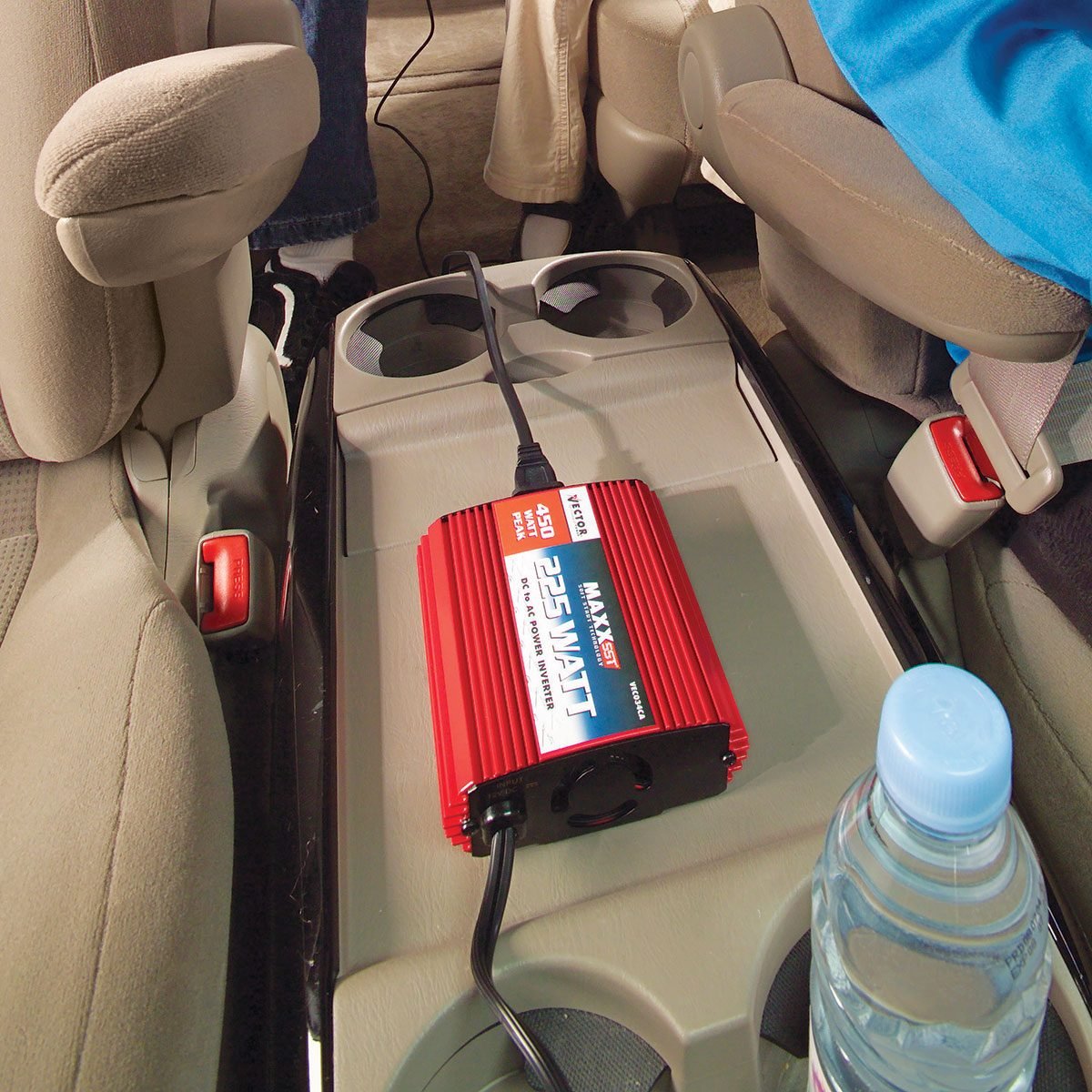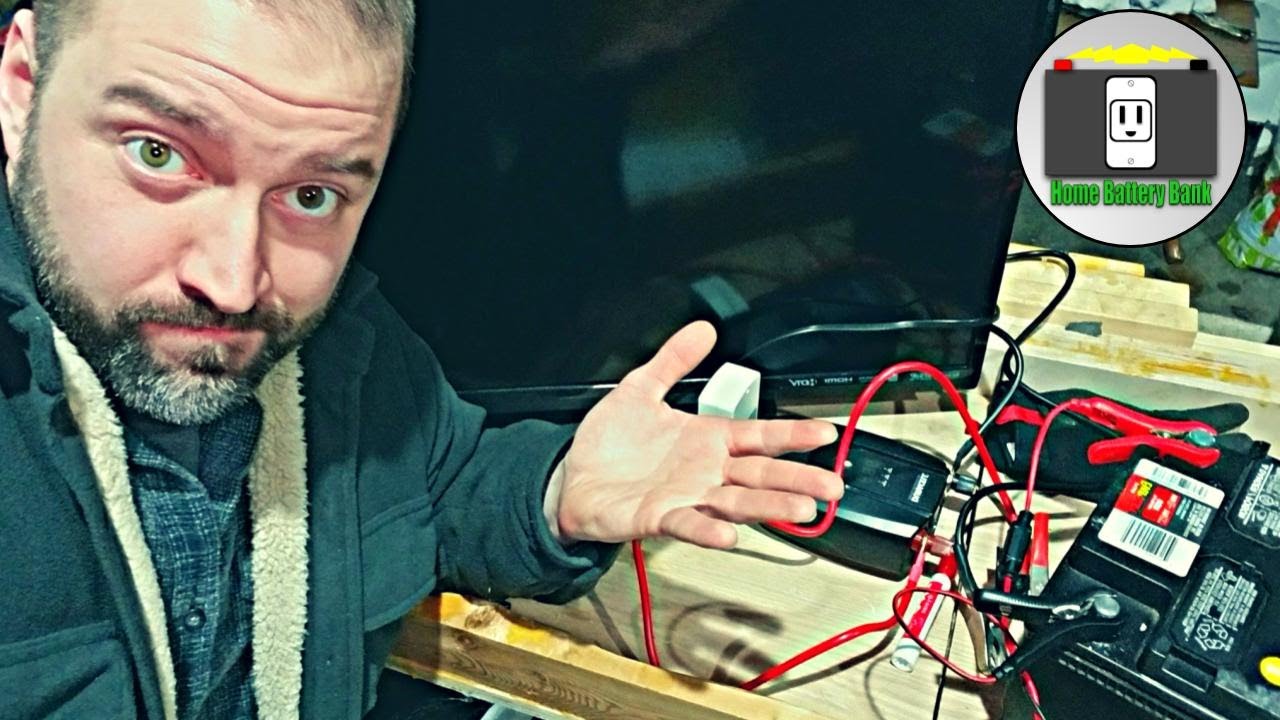How long would a car battery power a TV? A car battery can power a TV for 2 to 5 hours, depending on the TV’s wattage and battery capacity. This duration varies with usage and battery health.
Car batteries are primarily designed to start engines, not run electronics for extended periods. To power a TV, the battery’s capacity and the TV’s energy consumption must be considered. Car batteries typically have a 12-volt output and an average capacity of 50 to 70 amp-hours.
TVs vary significantly in power usage, with smaller models consuming around 30 watts and larger ones up to 150 watts. Constantly using a car battery for such purposes can lead to quicker depletion and reduced lifespan. Always monitor the battery’s health to avoid unexpected power loss.
Car Battery Basics
Understanding car battery basics helps one know how long it powers a TV. Car batteries store and provide electrical energy for your vehicle. They play a crucial role in starting your engine and powering electrical systems.
Types Of Car Batteries
There are different types of car batteries, each with unique features:
- Lead-Acid Batteries: Most common and affordable. They are heavy and require maintenance.
- Absorbent Glass Mat (AGM) Batteries: More durable and maintenance-free. They are more expensive than lead-acid batteries.
- Lithium-Ion Batteries: Lightweight and long-lasting. They are the most expensive type.
Battery Capacity And Voltage
The capacity and voltage of a car battery determine how long it can power a TV. Battery capacity is measured in ampere-hours (Ah). It indicates the amount of current a battery provides over time.
Typical car batteries have a voltage of 12 volts. Here is a table showing different capacities:
| Battery Type | Capacity (Ah) | Voltage (V) |
|---|---|---|
| Lead-Acid | 50-100 Ah | 12V |
| AGM | 40-70 Ah | 12V |
| Lithium-Ion | 30-60 Ah | 12V |
Higher capacity batteries can power devices for longer periods. To calculate power duration, divide the battery’s capacity by the TV’s power consumption. Ensure the TV’s wattage is compatible with the battery voltage.

Credit: www.reddit.com
Power Requirements Of A Tv
Understanding the power requirements of a TV is essential for estimating how long a car battery can power it. TVs come in various sizes and technologies, each affecting their power consumption.
Common Tv Wattage
Most modern TVs have different wattage ratings. Here is a table showing common TV wattages based on size:
| TV Size (inches) | Average Wattage (W) |
|---|---|
| 24″ | 20 – 30W |
| 32″ | 30 – 50W |
| 42″ | 50 – 80W |
| 55″ | 60 – 90W |
| 65″ | 80 – 150W |
Impact Of Tv Size And Technology
The size and technology of a TV significantly impact its power consumption. Larger TVs generally require more power. However, technology also plays a crucial role.
- LED TVs: These are energy-efficient and consume less power.
- LCD TVs: Slightly less efficient compared to LED TVs.
- Plasma TVs: These consume the most power among common TV types.
- OLED TVs: They offer better efficiency than Plasma but higher than LED.
Understanding these factors helps estimate how long a car battery can power your TV. Knowing the TV’s wattage and technology type is crucial for accurate calculations.
Calculating Battery Life
To find out how long would a car battery power a tv, calculate battery life. Determining how long a car battery can power a TV involves some basic calculations. You need to understand the energy requirements of your TV and the capacity of your car battery. This section will guide you through the necessary steps and formulas to calculate the battery life effectively.
Formulas And Assumptions
To start, you need two main pieces of information:
- TV Power Consumption (in watts)
- Car Battery Capacity (in amp-hours)
Use the following formula to calculate the total energy in watt-hours (Wh) your car battery can provide:
Battery Energy (Wh) = Battery Capacity (Ah) × Battery Voltage (V)For a standard 12V car battery, the voltage is 12V. Next, you need to convert the TV’s power consumption into hours of usage:
Battery Life (hours) = Battery Energy (Wh) / TV Power Consumption (W)Keep in mind that these calculations assume 100% efficiency, which is rarely the case in real-world scenarios.
Example Calculations
Let’s go through an example. Suppose you have a 12V car battery with a capacity of 50Ah and a TV that consumes 100W.
First, calculate the battery energy:
Battery Energy = 50Ah × 12V = 600WhNext, determine the battery life:
Battery Life = 600Wh / 100W = 6 hoursSo, a fully charged 50Ah car battery can power a 100W TV for about 6 hours. If your TV consumes 50W, the battery life would double to 12 hours.
| TV Power Consumption (W) | Battery Capacity (Ah) | Battery Voltage (V) | Battery Life (Hours) |
|---|---|---|---|
| 100 | 50 | 12 | 6 |
| 50 | 50 | 12 | 12 |
These calculations provide a good estimate. Real-world usage may vary due to efficiency losses and battery health.
Factors Affecting Battery Life
Understanding the factors affecting a car battery’s life can help you estimate how long it can power a TV. Various elements like battery age, condition, and environmental factors play crucial roles. Let’s explore these factors in detail.
Battery Age And Condition
The age and condition of your car battery significantly impact its performance. New batteries tend to hold a charge longer compared to older ones. Over time, batteries lose their capacity to hold a charge.
- New Batteries: Provide longer power durations.
- Old Batteries: Lose efficiency and power quicker.
Regular maintenance can also affect how well a battery performs. Keeping terminals clean and checking fluid levels can extend battery life.
Temperature And Environmental Impact
Temperature has a significant impact on a battery’s performance. Extreme temperatures can reduce a battery’s ability to hold a charge.
| Temperature Range | Impact on Battery |
|---|---|
| Hot Weather | Increases internal resistance, reducing capacity |
| Cold Weather | Slows down chemical reactions, reducing efficiency |
Storing the car in a garage can help mitigate temperature effects. Using an insulating cover for the battery can also help.
Real-world Scenarios
Many people wonder how long a car battery can power a TV. This depends on several factors. Let’s explore these real-world scenarios.
Using An Inverter
To power a TV with a car battery, you need an inverter. This device converts DC power from the battery to AC power for the TV.
Here is a simple table to show the power requirements:
| Device | Power Consumption (Watts) | Battery Capacity (Amp-Hours) | Runtime (Hours) |
|---|---|---|---|
| 32-inch LED TV | 60 | 50 | 4-5 |
| 42-inch LED TV | 100 | 50 | 2-3 |
Note: These runtimes are estimates. Real performance may vary.
Practical Considerations
Several factors can affect the actual runtime. Battery age and health are critical. An old battery may not last as long.
Weather conditions also matter. Batteries discharge faster in cold weather. TV power settings can make a difference. Lower brightness settings use less power.
It’s important to monitor the battery voltage. Running the battery too low can damage it. Use a voltage meter to keep an eye on it.
Using a car battery to power a TV is possible. But always consider these practical points.
Safety Concerns
Using a car battery to power a TV is a common curiosity. Safety concerns arise from this practice. Understanding the risks and taking precautions is crucial.
Risks Of Draining Car Battery
Draining a car battery can cause serious issues. The battery may die completely, leaving you stranded. A car battery is designed for short, powerful bursts. Prolonged use for powering a TV can reduce its lifespan.
- Battery failure
- Stranded vehicle
- Reduced battery lifespan
Proper Handling And Precautions
Proper handling of the car battery is important. Follow these precautions to ensure safety:
- Use an inverter for safe power conversion.
- Limit TV usage to short periods.
- Monitor the battery voltage regularly.
These steps help in avoiding potential hazards. Ensuring the battery remains in good condition is key. Always prioritize safety.
Alternative Solutions
If you are wondering about powering a TV with a car battery, consider alternative solutions. These options can be more efficient and reliable. Explore portable power stations and solar-powered options for better results.
Portable Power Stations
Portable power stations are compact and easy to use. These devices store electricity and provide a stable power source. You can charge them using a wall outlet or a car charger.
- Lightweight and portable
- Multiple output ports
- Long-lasting battery life
Portable power stations are ideal for outdoor activities. They can power your TV for several hours. Some models even support other devices like laptops and phones. Check the power station’s capacity before buying.
Solar-powered Options
Solar-powered options harness energy from the sun. They are environmentally friendly and cost-effective in the long run. Solar panels convert sunlight into electricity, which charges a battery.
| Feature | Benefit |
|---|---|
| Renewable energy source | Reduces electricity bills |
| Low maintenance | Long-lasting performance |
| Portable designs | Easy to carry and set up |
Solar-powered options are perfect for remote locations. They provide a continuous power supply during sunny days. You can use them for camping trips or emergency situations. Ensure you have enough sunlight for optimal performance.

Credit: www.familyhandyman.com

Credit: www.reddit.com
Conclusion
Understanding how long would a car battery power a TV helps in various situations. Always consider the TV’s wattage and battery capacity. Regular monitoring ensures you don’t drain the battery. Using a power inverter optimizes energy use. This knowledge prepares you for unexpected needs, enhancing your preparedness and convenience.

